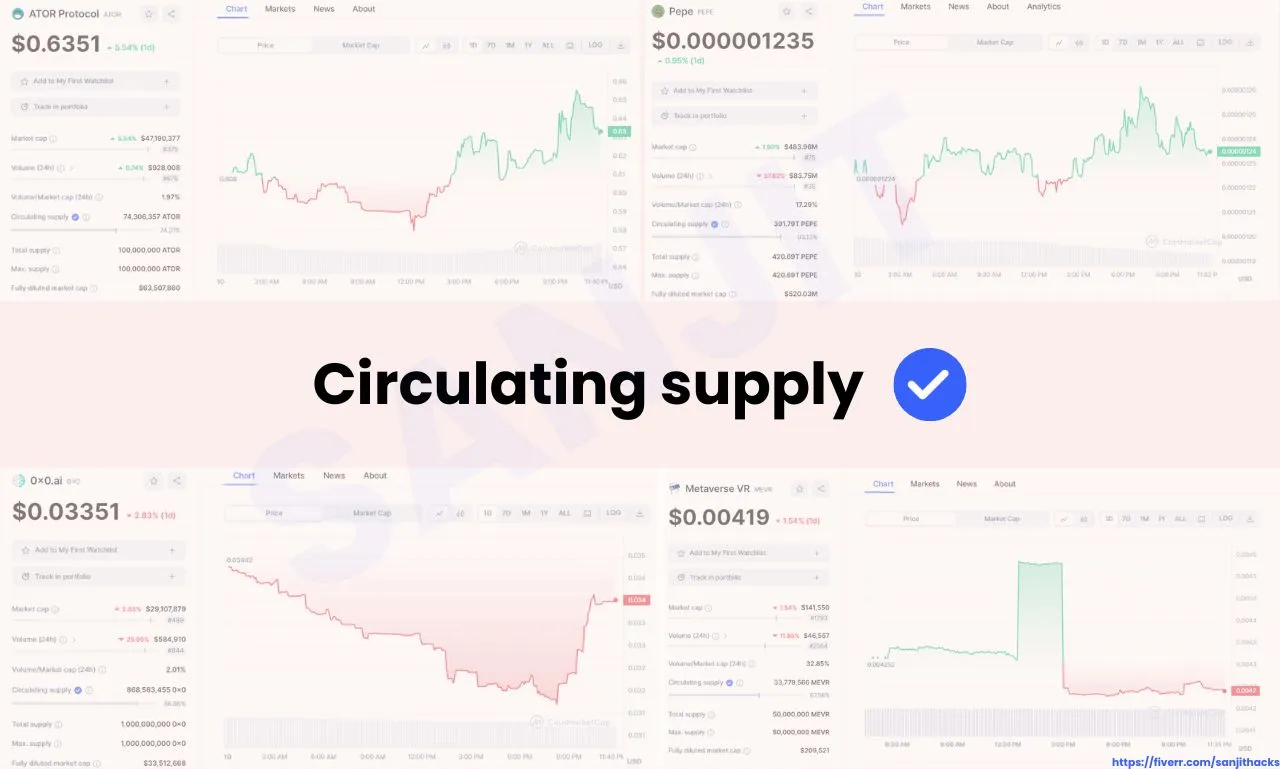The best approximation of the number of coins that are circulating in the market and in the general public’s hands.
In this article, We will explain why and how coinmarketcap circulatin supply plays an important role in marketdata 🎉
Table of contents
Open Table of contents
What Is Circulating Supply?

The amount of cryptocurrency coins or tokens in circulation is a fluctuating value that can increase and/or decrease over time.
If a cryptocurrency is mineable, new coins can be created gradually via mining. In the case of a centralized token, the supply can be increased by the developers at will via instantaneous minting.
The supply can also go down: either deliberately via burning, or as a result of accidents, like sending coins to an irrecoverable address or losing access to a wallet where funds are stored.
The network at large has no reliable knowledge of how much of the total supply is in active circulation, making the metric of circulating supply an imperfect approximation.
For example, even though nominally the circulating supply of Bitcoin (BTC) should be over 18 million coins — as that is how many Bitcoin have been mined since the network’s inception — it is estimated that around 4 million BTC have been permanently lost, placing the true circulating supply closer to 14 million.
Circulating supply should not be confused with total supply, which is the number of coins that have been mined so far minus all the coins that have been knowingly burned, and the maximum supply, which is the hard-coded limit that neither total nor circulating supply can ever exceed.
